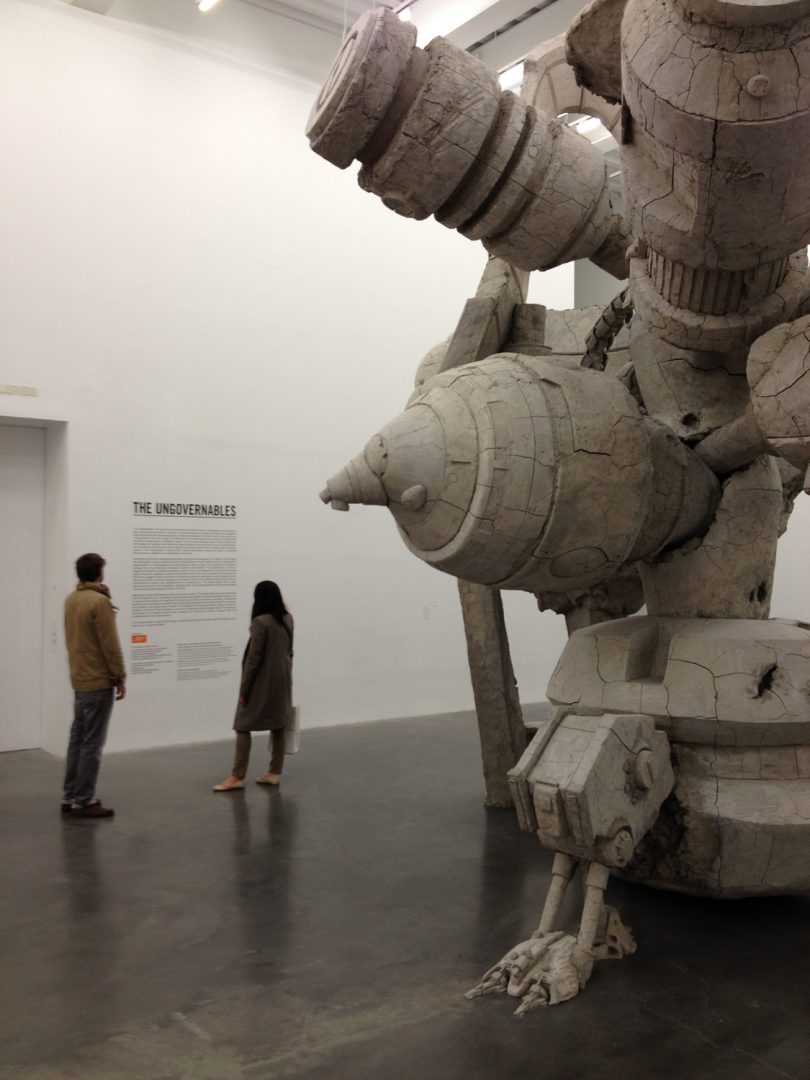A New Generation of ‘Ungovernable’ Artists on Display at the New Museum
March 28, 2012
“The Ungovernables” is the second triennial exhibition in the history of the New Museum. It brings together 50 artists and artist collectives from around the globe, occupying all five gallery floors. Most of the artists involved are young people working through experimental forms.

The term “ungovernable” in the context of art and the art world refers to free expression and the abandonment of preconceptions. Innovation has always been the hallmark of great art, and here, it is the common factor for such a large exhibition. Radical innovation of the sort on display here can be laughably stupid or awe-inspiring, and amongst “The Ungovernables” is plenty of both.
The photo journal and hand-written diary entries of Brazilian artist Jonathas de Andrade in his work “Ressaca Tropical” describe romances and political philosophy. “I feel that I am an attractive guy— I’m not handsome, but I am very sexy and have that ‘X’ factor… When I said that I’m not handsome is because I don’t have aesthetic beauty,” Andrade wrote.
These entries line the wall of the fifth floor, flanked by photographs of Brazilian cityscape and people. Though not in strict chronological order, the combination of personal text and imagery resembles Facebook’s Timeline. The series either ends of begins with entry “11/09/77,” “I am sexually frustrated… a great anxiety.”
The second floor houses a similar journal by Lebanese artist Mounira Al Solh, entitled “From waiting blue to lingering yellow (or vice versa).” A group of 44 orange, yellow and blue multimedia paintings are arranged scattershot on the gallery wall, accompanied by hand-written text, typically a line or two about waiting. The pairing gives the sense that these images were created, conceptually or otherwise, in between events in the artist’s life, waiting for a friend, waiting for a file to download.
This work, like much of that in “The Ungovernables,” requires that the viewer invest some time and concentration. Sometimes, this is rewarding, sometimes, disappointing. In the case of “From waiting blue to lingering yellow,” it’s impossible— the second floor is too loud.
Some of the work lives up to the title “Ungovernable” too much so. Hassan Khan’s “JEWEL,” a six-and-a-half-minute film set to Hassan’s droning, percussive, thunderous original score, bleeds into the gallery, clashing against the thump of Jonathas de Andrade’s film “4000 Disparos” and Cinthia Marcelle and Tiago Mata Machado’s “O Século,” a loop of trash being thrown into a street, with the sound of clanging five-gallon drums and breaking florescent light tubes greatly amplified. That last one invades from the third floor. While “O Século” and “JEWEL” are some of the most captivating works in the exhibition, their sheer volume spoils some less assuming pieces.
One piece that could not be overrun, however, is Adrián Villar Rojas’s massive sculpture, “A Person Loved Me.” The floor-to-ceiling construction of clay, wood, metal, cement, Styrofoam, burlap, sand and paint resembles a futuristic mech. Composed of tubes, joints, pistons and oculi, it could’ve crash-landed out of Starcraft. Yet the cracked clay lends it an ancient quality, suggesting a future past, or lost, alien world. The work is enigmatic and arresting, forceful, defiant, ungovernable.
Such a huge exhibition can’t help but fail at times. Some of the works — especially, in this case, the sparer, more conceptual pieces— fail to command attention, or reward it. Much of the experimentation is perplexing or even frustrating. But the successful works, and there are many of them, gratify the viewer on emotional, intellectual and visceral levels, and one can help but be excited to witness a new generation of artists prove that they never needed to earn their freedom.









